National Aeronautics and Space Administration
Goddard Space Flight Center
Search:

Balloon Program Office
Technology
Wallops Arc Second Pointer (WASP)
The WASP System, currently under development, is a NASA provided support system which can point telescopes on balloon gondolas at inertial targets with arc-second accuracy. WASP is intended to be a flexible system that can be used to support a variety of science-provided instruments and sensors to meet specific mission performance requirements. Major components of WASP are reusable which reduces the overall costs to the BPO and to users.
WASP has successfully completed two test flights, in 2011 and 2012, and has demonstrated positional stability at sub-arc-second levels during flight. In 2013, WASP is supporting its first pointed science instrument, the HyperSpectral Imager for Climate Science (HySICS). The HySICS systems are provided by the Laboratory for Atmospheric and Space Physics (LASP), which is an institute at the University of Colorado at Boulder (CU). The WASP/HySICS gondola is scheduled to be launched from Fort Sumner, New Mexico in September 2013.
Figure 1 shows a view of the WASP gondola-mounted elements as configured for Test Flight One. Figure 2 shows the WASP Test Flight One system on the launch vehicle suspended by its flight bridle system beneath the rotator.
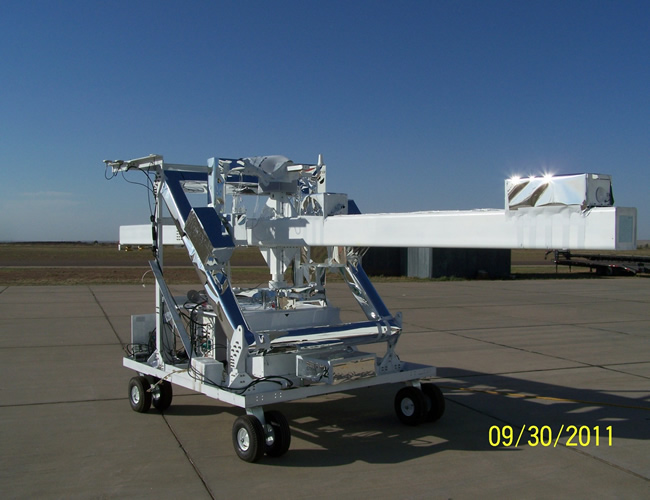
Figure One- WASP Test Flight One Gondola
The WASP system points an instrument (modeled in Figure 1 by a 24-ft 1500-lb steel beam) using a gondola mounted pitch/yaw articulated gimbal. The range of motion of the yaw-gimbal is purposely minimized to reduce kinematic coupling during fine pointing. Thus, the gondola itself is suspended beneath a standard NASA Rotator to provide large angle azimuth targeting and coarse azimuth stabilization.
Sub-arc-second pointing is enabled by the mechanical design of the WASP gimbal hubs. A pair of hubs on opposing sides of the gimbal is used to establish each articulated axis of rotation. Each hub uses high-precision angular contact bearings to float the rotor side and stator side of the hub on a central shaft. The central shaft in each hub is itself rotated by a small diameter torque motor through a gear-box to eliminate static friction. The shafts in each hub pair are counter-rotated in an attempt to reduce the residual kinetic friction that must be corrected by the control system.
A large-diameter brushless DC torque motor is used to provide the torque for each control axis. The current in the three electrical phases in each of the control motors is commutated in software and set using power Op-Amps in a motor interface circuit. To accomplish this, rotor-to-stator angle for each torque motor is determined through the use of resolvers and positional encoders – one pair for each control axis
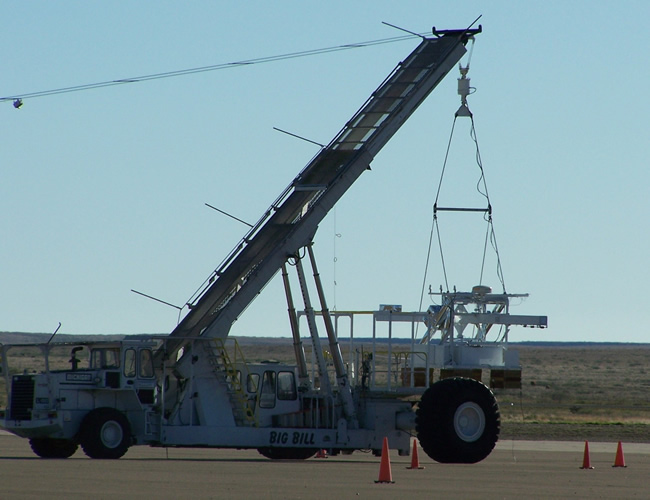 Figure Two- WASP Test Flight One Gondola on Launch Vehicle
Figure Two- WASP Test Flight One Gondola on Launch Vehicle
Instrument attitude is computed by integrating incremental angles (delta-Theta) output from a LN251 system. While the LN251 is a fully capable GPS/INS navigation system, its use on the WASP system is limited to that of a relatively low-cost, high-quality inertial-rate-unit. Control torques are computed using a modified Proportional-Integral-Derivative control law in each axis.
The WASP Test Flight One was conducted on October 7, 2011. The flight was launched from Fort Sumner, New Mexico below a standard 11 Million Cubic Foot (MCF) balloon. While at float, the team was able to uncage the mock instrument and point it inertially with sub-arc-second stability. Inertial target-offsets were issued from the ground to demonstrate target acquisition dynamics and a concept of operations for fine-pointing adjustments provided by a science instrument. Figure Three shows the pitch and yaw errors during more than 20 minutes of station-keeping at a selected inertial target.
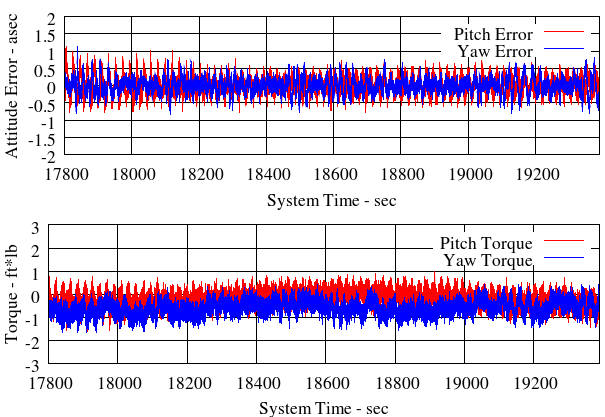 Figure Three- WASP Test Flight One
Station-keeping Stability
Figure Three- WASP Test Flight One
Station-keeping Stability
After the initial test flight of WASP, a number of system modifications and improvements were made, and a new gondola was built and flown. The system changes include incorporating the star tracker into the control system loop, changing the mock telescope from a 24 foot steel tube to a 16 foot tube with significantly less inertia, moving the avionics deck from the outer frame to the mock telescope, and adding angular positional encoders to the Resolver Hubs. Figure Four shows the WASP Test Flight Two configuration, and Figure Five shows the stability achieved during flight during a one hour station-keeping period.
For more information on the WASP Project, please contact the Mission Manager, Edward Udinski Code 820, at Wallops Flight Facility.
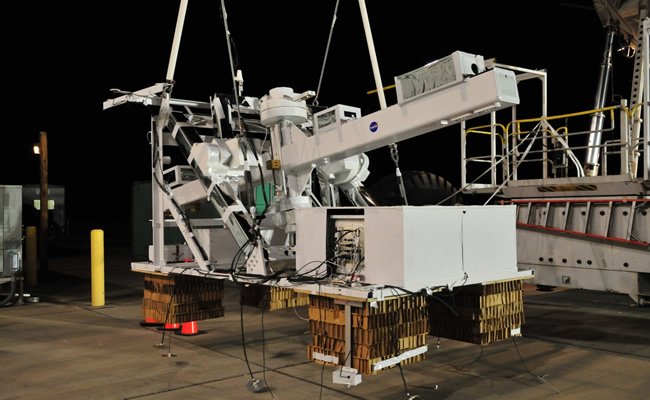 Figure Four- WASP Test Flight Two Gondola
Figure Four- WASP Test Flight Two Gondola
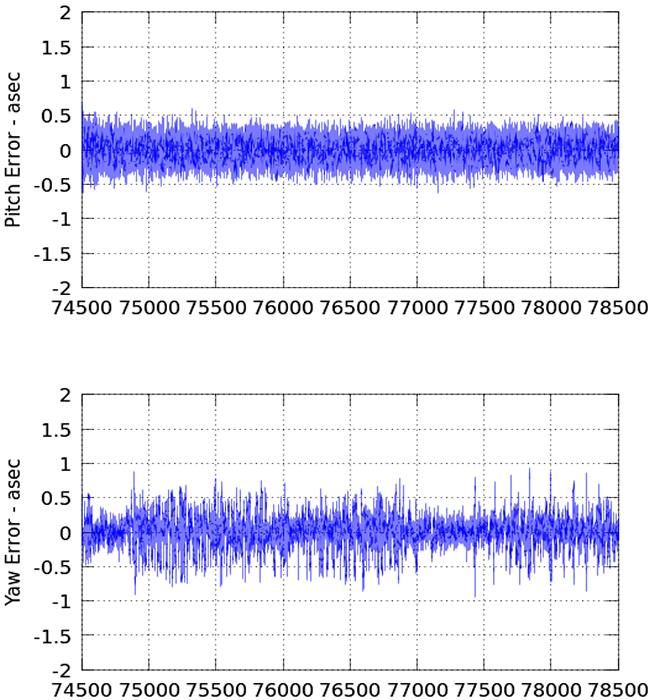 Figure Five- WASP Test Flight
Two Stability over one hour peroid
Figure Five- WASP Test Flight
Two Stability over one hour peroid
NASA Code 820
Scientific Balloon Update
Report back for the latest update from NASA's Balloon Program Office.
- NASA Official: Debora Fairbrother
- Point of Contact: Valerie Brizak
